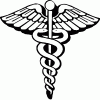Tips for Getting a Medical Assistant Job

With more than half a million medical assistants on the job, medical assisting is one of the fastest growing professions in the United States. Given the high demand, you’d think MA jobs are falling out of trees, but chances are you will have to go searching, and here are some strategies for finding them, based on surveys conducted by the American Association of Medical Assistants (AAMA) that provide an interesting snapshot of the profession on a national level.
Tip #1: Get Certified
Once you earn your degree, certificate or diploma in medical assisting, consider taking the AAMA test to become certified. Not only are Certified Medical Assistants (CMAs) more desirable by employers, but they also earn more money. A 2012 AAMA survey shows that CMAs earn on average $29,618 per year ($15.13 per hour), whereas non-certified MAs earn an average $26,527 ($13.69 per hour).
Tip #2: Go West
The same 2012 AAMA survey revealed that of all the areas in the US, the Pacific region had the highest average annual salary for full-time CMAs: $33,221 a year ($17.27 per hour). New England was the runner-up, with an annual average of $31,794 ($16.25 per hour).
Tip #3: Go See the Doctor
Not surprisingly most medical assisting jobs — 84%, according to the AAMA survey — are located in doctors’ offices. Only about 5% of MAs work in hospitals, although their salary on average is slightly higher than that of MAs in physician’s offices ($30,843 vs. $29,513). Of the medical assistants in doctors’ offices, 58% are in primary care offices, while 24% work in specialists’ offices, but specialist MAs earn more ($31,036 vs. $28,858).
Tip #4: Let’s Get Clinical
Although medical assistants’ duties are typically split between clinical and administrative tasks, a 2011 AAMA survey revealed that the bulk of their time — 72% to be exact — is devoted to clinical duties. Survey respondents said that only 25% of their job involves administrative tasks. Managerial duties accounted for 9% of MAs’ time.
So, it’s advisable to brush up on your medical skills. In particular, the most prevalent clinical tasks cited were, in order:
- Taking vital signs (along with patient history)
- Helping with exams
- Giving injections
- Administering electrocardiograms (EKGs)
- Lab work
- Drawing blood
- Diagnostic testing
Tip #5: Stick With It
Once you do land a medical assisting job, know that salaries increase steadily the longer you stay in the profession. According to the 2012 AAMA survey, a full-time MA with 16-plus years of experience earns about 26% more than an MA who’s just starting, so if you’re not making as much as you’d like, wait a while and you just might be.
(Source: AAMA)







